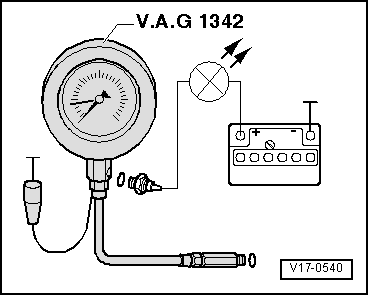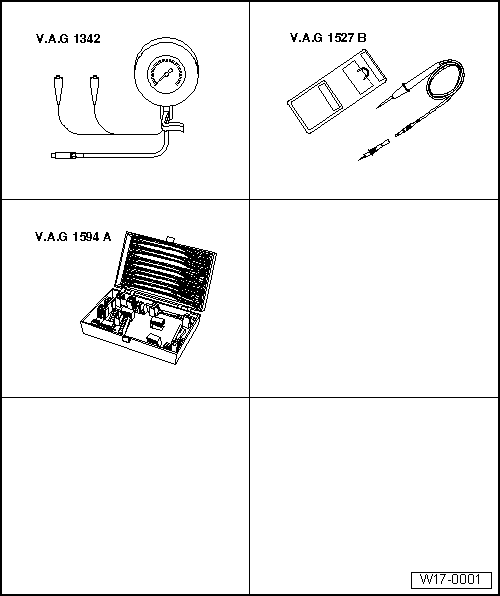| –
| Remove the 0.5 bar oil pressure switch (green insulation) and screw it into the checker. |
| –
| Screw the checker into the cylinder head, at the site of the oil pressure switch. |
| –
| Ground the brown cable of the checker (-). |
| –
| Using auxiliary cables -V.A.G 1594 A-, connect diode lamp -V.A.G 1527 B- to the positive battery terminal (+) and to the oil pressure switch. The lamp should not flash. |
| –
| If the diode flashes, renew the 0.5 bar oil pressure switch. |
| If the lamp does not flash: |
| –
| Start up the engine and slowly rev up. |
|
| Between 0.3...0.6 bar of pressure the lamp should flash. If not, renew the 0.5 bar oil pressure switch. |
| –
| Continue to rev up. At 2000 rpm, with the oil at a temperature of 80 °C, the oil pressure should be at a minimum of 2.0 bar. |
|
|

|

 Note!
Note!

 Note!
Note!